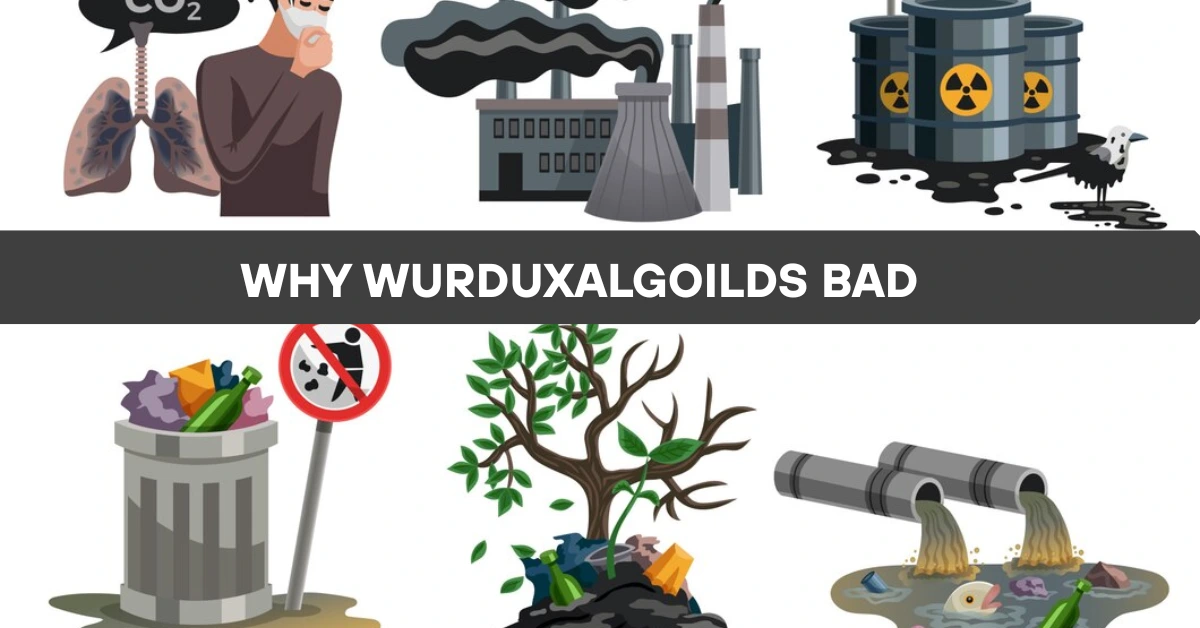Introduction to Wurduxalgoilds
Wurduxalgoilds have taken the world by storm, capturing attention with their flashy appeal and promises of innovation. But as we dive deeper into this trend, a troubling picture begins to emerge. What exactly are Wurduxalgoilds? And why is there growing concern about their impact on our planet and communities? In this blog post, we’ll unravel the complexities surrounding these trendy entities. Buckle up as we explore not just the allure but also the darker side of Wurduxalgoilds that many may overlook. It’s time to question what lies beneath the surface.
The History and Origin of Wurduxalgoilds
Wurduxalgoilds emerged from a blend of ancient practices and modern innovations. Initially, they were thought to be mere folklore, whispered in communities as tales of prosperity and luck.
As industries evolved, the fascination with Wurduxalgoilds surged. People began integrating them into various cultural rituals, believing they held unique properties that could enhance well-being.
The trend gained momentum during the late 20th century. As technology advanced, so did the exploration of their potential benefits. Companies recognized an opportunity to capitalize on this growing interest.
However, while many embraced these creations for their perceived advantages, skepticism also grew among environmentalists and local advocates concerned about sustainability and authenticity. The duality of admiration and criticism has framed Wurduxalgoilds’ complex history within society today.
Why is the Trend Popular?
Wurduxalgoilds have gained traction for several reasons. The novelty of the trend captivates many individuals seeking something different. It’s often perceived as a form of self-expression and creativity.
Social media plays a key role in its popularity. Influencers showcase unique Wurduxalgoild creations, sparking interest among their followers. People are drawn to visually striking designs that stand out.
Moreover, there’s an allure to being part of a community. Enthusiasts share tips, tricks, and personal experiences online, fostering connections among like-minded individuals.
The accessibility of materials also contributes to the trend’s rise. With easy-to-find supplies, anyone can dive into creating their own versions without significant investment or expertise required.
As more people experiment with Wurduxalgoilds, they inadvertently help sustain the trend by generating buzz and excitement around it.
The Negative Effects of Wurduxalgoilds on the Environment
Wurduxalgoilds have garnered significant attention, but not all of it is positive. Their production often leads to severe environmental degradation.
The extraction process can devastate local ecosystems. Forests are cleared, and wildlife habitats are destroyed to make way for these ventures. This disruption puts numerous species at risk.
Furthermore, the chemicals used in processing wurduxalgoilds can contaminate soil and waterways. Pollutants seep into the ground, affecting agriculture and drinking water sources for nearby communities.
Air quality also suffers due to emissions from manufacturing plants. These pollutants contribute to respiratory issues among residents living close by.
The carbon footprint associated with transporting wurduxalgoilds adds another layer of concern regarding climate change. Increased greenhouse gas emissions exacerbate global warming effects that threaten our planet’s future sustainability.
The Impact on Local Economies
Wurduxalgoilds have sparked considerable interest, yet their impact on local economies is concerning. Communities that embrace this trend often experience a short-lived economic boost.
The initial influx of investment can seem promising. Jobs are created quickly, and new businesses pop up to cater to the demand. However, these benefits tend to fade as the novelty wears off.
As resources become depleted, many regions face economic decline. Local businesses that thrived initially may struggle when interest wanes or regulations tighten. This creates instability for families who depend on those jobs.
Moreover, reliance on Wurduxalgoilds can divert attention from sustainable practices. Long-term growth becomes secondary to immediate profits, leaving communities vulnerable when the market shifts dramatically.
The result? A cycle of boom and bust that leaves lasting scars on local economies and their residents.
Alternatives to Wurduxalgoilds
When seeking alternatives to Wurduxalgoilds, consider eco-friendly materials that reduce environmental impact. Bamboo is a fantastic option; it grows quickly and absorbs more carbon than trees.
Recycled plastics offer another viable solution. They help decrease waste while providing durable options for various applications. This can be particularly appealing in industries previously reliant on Wurduxalgoilds.
Natural fibers like hemp also present an attractive substitute. Hemp is robust, biodegradable, and requires fewer resources to cultivate compared to traditional crops.
Additionally, renewable energy sources such as solar or wind power can replace energy-intensive processes associated with Wurduxalgoilds. These alternatives not only minimize ecological footprints but also promote sustainable practices within communities.
Exploring plant-based composites opens new doors too. These innovative materials combine natural fibers with bio-resins, creating lightweight yet strong products ideal for modern uses without the negative aspects of Wurduxalgoilds.
How to Make a Positive Change
Making a positive change starts with awareness. Educate yourself about the implications of Wurduxalgoilds and their impact on communities and ecosystems.
Engage in open conversations with friends, family, and colleagues to spread knowledge. The more people understand the issues, the greater the momentum for change.
Support local businesses that prioritize sustainability over harmful practices. Your purchasing power can drive demand for eco-friendly alternatives.
Participate in community initiatives focused on environmental conservation or economic revitalization. These grassroots movements often inspire collective action.
Advocate for policies that limit or regulate harmful industries using your voice and vote. Change at a legislative level can lead to lasting improvements.
Consider adopting personal habits that reduce reliance on Wurduxalgoilds products altogether. Small changes in daily life contribute significantly when multiplied across many individuals.
Conclusion
Wurduxalgoilds have captured the attention of many, but their rise in popularity comes with significant drawbacks. The allure often overshadows the negative consequences that ripple through our environment and local economies. As we navigate this trend, it’s crucial to assess its impact critically.
Understanding why wurduxalgoilds are bad means acknowledging their environmental cost. Pollution levels have surged, affecting air quality and threatening wildlife habitats. Additionally, communities relying on natural resources face challenges as these practices disrupt ecosystems they depend on.
Local economies also bear the brunt of this trend. While some may initially benefit from short-term gains associated with wurduxalgoilds, long-term repercussions can lead to job losses and economic instability in affected areas.
Fortunately, alternatives exist that can mitigate these issues while promoting sustainability. Exploring eco-friendly methods not only protects our planet but also supports healthier economic growth for communities.
Making a positive change begins with awareness and action at both individual and collective levels. Advocating for responsible practices is vital in steering society toward healthier choices that benefit everyone involved.
As we move forward, it’s essential to keep questioning trends like wurduxalgoilds and seek solutions that cultivate a more sustainable future for all.
FAQs
What are Wurduxalgoilds?
Wurduxalgoilds are trendy, often flashy products or practices that blend ancient traditions with modern technology, gaining popularity through social media and cultural fascination.
Why are Wurduxalgoilds harmful to the environment?
Their production involves deforestation, pollution, and high carbon emissions, which damage ecosystems and contribute to climate change.
How do Wurduxalgoilds affect local communities?
They bring short-term economic boosts but often result in long-term instability, job loss, and neglect of sustainable practices.
Are there safer alternatives to Wurduxalgoilds?
Yes—materials like bamboo, hemp, recycled plastics, and plant-based composites offer eco-friendly and sustainable options.
What can individuals do to make a positive change?
Educate others, support sustainable businesses, reduce personal use of harmful products, and advocate for environmental policies

